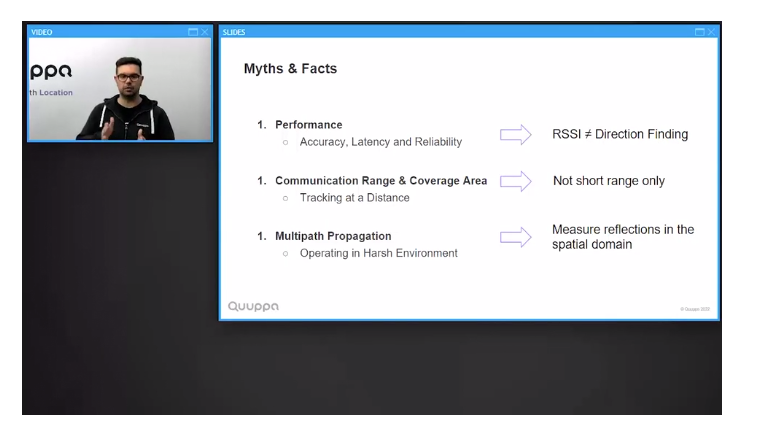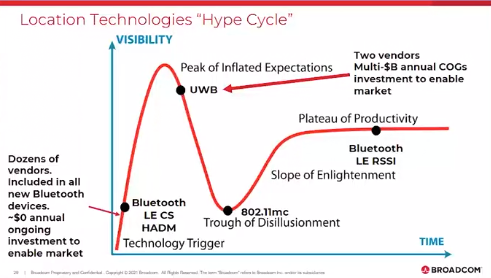There’s a useful new webinar at the Bluetooth SIG on The Myths & Facts About Bluetooth® Technology as a Positioning Radio. Fabio Belloni from Quuppa explains the main Bluetooth myths and facts:

- Performance – There are misconceptions about accuracy, latency and reliability brought over from older systems using only received signal strength (RSSI). Newer systems based on Bluetooth direction finding provide much improved performance.
- Communication Range & Coverage Area – People incorrectly think Bluetooth is a short range 10m – 15m technology. This isn’t so. Long range beacons can transmit up to 1.5Km and can work up to 100m in location finding scenarios.
- Multipath Propagation – It’s wrongly perceived that Bluetooth is poor in harsh environments. Bluetooth is, in fact, designed for factory floor and additionally newer AoA direction finding can use spectral analysis to reduce the affect of radio reflections.
Gabriel Desjardins from Broadcom mentions how location technologies have overcome the peak of inflated expectations caused by UWB and are now in the plateau of productivity provided by Bluetooth LE.

Andrew Zignani shows the results of a survey on RTLS from 213 C-Level decision makers across five main verticals. Only 13% of businesses have already deployed RTLS and there will be a increased uptake over the next 5 years. Technology fragmentation and operational/maintenance cost are incorrectly seen as the barriers to adoption. The new Bluetooth AoA direction finding standard is easing fragmentation. The maintenance cost is actually very low compared to the ROI in most scenarios. Most want beacon battery life to be 90+ days and cost to be $11-$20 that are easily achievable with today’s beacons.